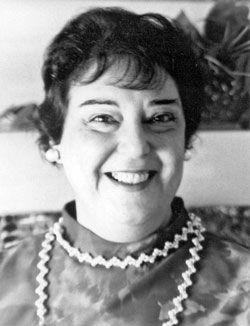Anger, frustration, irritation at self and others are emotions we must learn to deal with constructively and with great circumspection. To teach that we should recognize and defuse anger, however, does not give  any of us license to lose control at every annoyance. For we always are held accountable, measure for measure, for our thoughts and actions towards ourselves and others.
any of us license to lose control at every annoyance. For we always are held accountable, measure for measure, for our thoughts and actions towards ourselves and others.
Let us therefore be slow to anger and quick to forgive. As light workers who seek to demonstrate truth, let us follow these words of Paul the Apostle, written to the Colossians: “Therefore as the elect of God, holy and beloved, put on mercy, kindness, gentleness, humbleness of mind, meekness, patience; forbearing one another, and forgiving one another; and if any one has a complaint against his fellow man, just as Christ forgave you, so should you also forgive. And with all these things have love, which is the bond of perfection.”
Recognizing and dealing with anger is a necessary first step towards healing this emotion and transmuting it into love or forgiveness. If anger is not defused in proper outlets of release, it could build to dangerous resentment.
Love is the key to dealing with anger. If we as spiritual beings in physical bodies can learn to base our reactions on love and kindness, then in those instances where we feel and express anger it can be underlain with a solid foundation and knowledge of our responsibility to do unto others as we would have them do unto us; to respect ourselves and others as sons of God.
Light workers who have difficulties forgiving themselves and others must recognize the need to face their anger and resentment and to cleanse their error patterns. Time is getting short in these Latter Days for making such necessary and basic corrections. How can we as individuals and as a race be prepared to enter the New Age of love and brotherhood if we still allow such fundamental errors to linger in, and to poison, our minds?
Following is a letter written by Nada-Yolanda to one light worker concerning difficulties forgiving others. It was prompted by a communion Yolanda had with Sananda/Jesus.

“Sananda asks me to remind you of the following events in his last incarnation as Jesus. This is a paraphrase of a parable given by him to his disciples. If you wish to leave a gift (or a talent) on the altar of God (such as do good works on Earth for Spirit, help evolve the I Am Nation that is to manifest during the Age of Aquarius, help his Second Coming) but you still have an argument or an ill thought toward a fellow being, first make your peace with that person. For otherwise the I Am Self, God or cosmic law will deny your gift and reject your spiritual talents.
“Also, Jesus gave the world its most powerful prayer: the Lord’s Prayer. It has many deep cosmic laws built into it. One of the statements is this: Father, forgive my sins and errors just as I have forgiven the sins and the errors that have been committed against me; in like measure, no more, no less. Your I Am Self will forgive your personal oversights and soul-karmic impactions only to the extent that you forgive anyone anything that has been done to you in the past of this life or other lives.
“His last act upon the cross was for the repentant thief alongside him. Only if you truly believe the purity of the Christ, which Jesus was representing to all on Earth, will you be able to advance into paradise (the etheric and the Christ consciousness).
“Now is the time to forgive others in order to make further progress in your soul development. You must do it openly, without fear or qualifications, and it must be with true repentance in your heart and mind. Otherwise, you are guilty of binding yourself and them with your error and ill feelings and thoughts about them.
“God will bless you to the extent that you bless and love those whom you feel — whether you are right or wrong in your evaluations of them — have done wrong toward you.”
Forgiveness Imaging Technique
Anger, if not confronted and dealt with, may build into resentment and bitterness. The inner state of our mind, soul and emotions similarly can affect our physical-body balance and health. The spiritual principle here is: as within, so without.
Therefore, using spiritual techniques of forgiveness to counteract accumulated feelings of anger and resentment can have a positive effect on helping to reverse conditions of disharmony and dis-ease in mind, soul and body. Medical research has shown that resentment can be a major factor in illness, and that mental visualizations are helpful both in getting rid of resentment and in helping heal the physical body.
In Getting Well Again (J. P. Tarcher, Inc.; Los Angeles; 1978) researchers O. Carl Simonton, M.D., Stephanie Matthews-Simonton and James Creighton have reported positive results with experiments using a forgiveness technique for healing. Their method is based on a technique by metaphysical teacher Emmet Fox, from his book The Sermon on the Mount (Harper & Row, Publishers; New York and London; 1938).
As the authors explain, the essence of the forgiveness technique is “to become aware of the person toward whom you feel resentment and to picture good things happening to him or her. Initially we discovered that it was difficult to see good things happening to a person toward whom we felt anger and hostility. But then as we continued to use the process, we began to get a different perspective on our relationship to the person resented and on his behavior. For instance, we still might not approve of the way a person had handled a particular situation, but after using the process we could generally understand the situation better and begin to see how we may have contributed to the situation.”
The researchers stated that over a period of time, as they repeated the imagery process, they began to succeed in picturing good things happening to the other person toward whom they were directing these visualizations. Also, they felt better for it, and they reported that “any face-to-face dealings with the other person became more relaxed and pleasant.”
The technique is not meant to force you to have feelings of forgiveness for another. Rather, it is designed to allow you to get in touch with your feelings so you can understand better why you have anger and resentment, and thus release those patterns and feelings from the subconscious that block your ability to forgive.
The authors summed up their experiences: “The resentment imagery process had helped relieve stress that we might have carried around for much longer. We discovered that we had not denied our original response of anger and hurt, but rather had derived a new understanding and attitude that relieved our own discomfort. The benefits were clear.”
Based partly on the technique used in Getting Well Again, here is one we can use to dissolve resentment and anger towards ourselves and others, and to replace these feelings with love.
1. Make yourself comfortable, either sitting or lying down, as if preparing for meditation. If you are tense or your thoughts are distracted, use any suitable technique to relax your mind and body and to center your thoughts.
2. Visualize a clear picture in your mind of the person toward whom you feel resentment or anger. Do not try to project an image over long distances; rather, hold the mental image of the person in your auric field, as if the individual were directly in front of you, about two feet from your physical body.
3. Picture good things happening to that person. See him or her receiving spiritual benefits such as love, attention, new awakenings in spiritual development and service. See all spiritual and physical needs being fulfilled as determined by the will of that person’s high Self.
4. Be aware of your own feelings and reactions. If at first you have difficulty visualizing good things happening to the person, realize this can be a natural reaction of your mortal feelings, which can result from being emotionally involved in a situation or a relationship. Don’t despair, give up or think you have failed; the imaging will become easier with practice, and you will come to greater understandings as to why you have certain feelings and reactions.
5. Consider the role you may have played in the stressful scene. How might you reinterpret the event and the other person’s behavior? Try to imagine the other person’s point of view. How might the situation look to him or her? Perhaps there are valid points both of you should consider honestly and with open minds.
6. Be aware of how much more relaxed, less resentful you are. Latch on to this new understanding and love you have gained concerning the situation. Impress upon your mind this new sense of forgiveness, and carry it with you henceforth.
7. Repeat this imaging technique as often as you feel necessary. It is especially helpful to use it whenever you become aware of rerunning an unpleasant, painful or angering episode from the past.
But don’t be in a hurry! Deep-seated emotional problems are not solved overnight. Be patient with yourself. Allow time for the newfound feelings of each imaging session to sink in and take root in your consciousness. However, when you feel the need to give yourself another boost in order to strengthen and to amplify your feelings of forgiveness, don’t hesitate to have another session.
Use this technique for forgiving yourself as well as others. Having resentment, anger and lack of forgiveness for unresolved areas within your own consciousness can be as detrimental to your spiritual growth as manifesting these things towards others.
See yourself showered with all the good things our Father desires for each of His children. As you learn to forgive yourself and to love yourself as an equal child of God, you will learn also to love your fellowmen more.
Reprinted from a chapter by Phillel in the University of Life preview introductory course Love One Another, Volume 1: Divine Principles (out of print), published as MAIN magazine #62, July 1979.
Photos: (1) Nada-Yolanda, 1972, Mark-Age Archives. (2) Christ Forgiving Sins (artist unknown).

Thank you. This is exactly what I need right now.